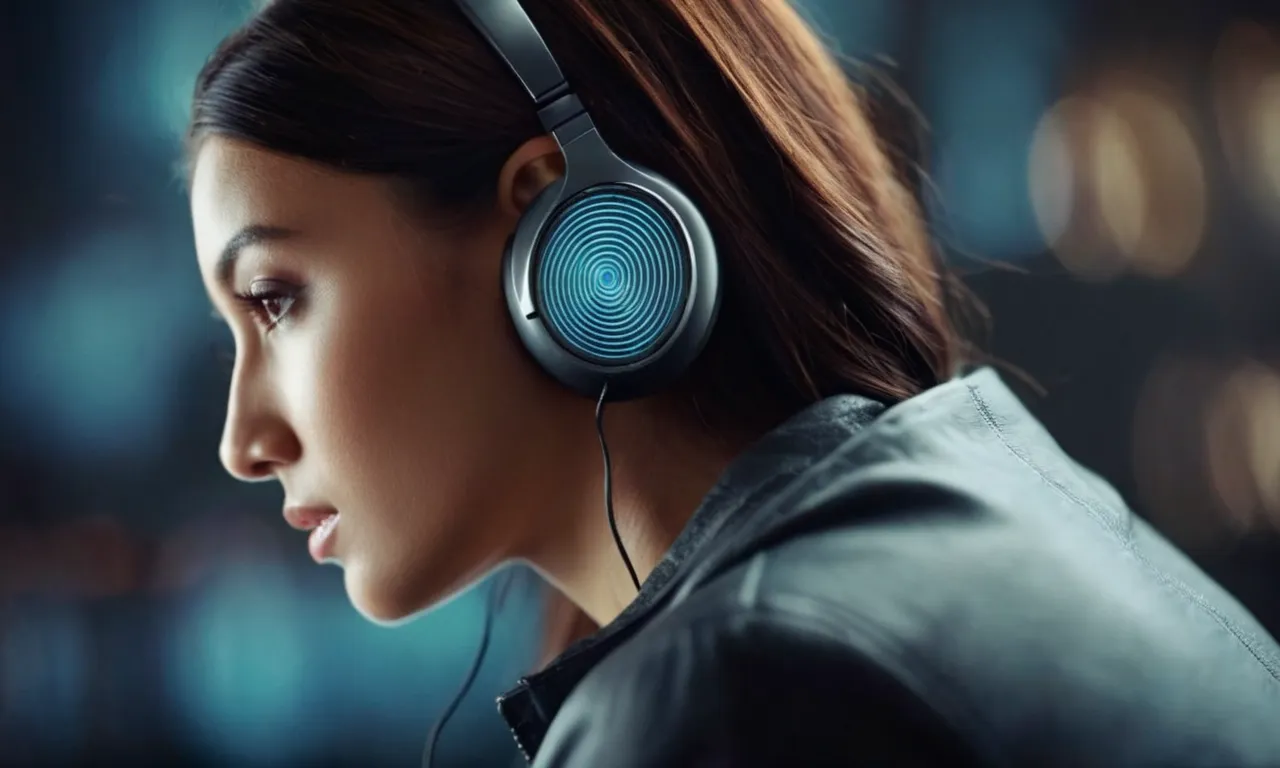Hearing Accessible Meaning: A Comprehensive Guide
Have you ever wondered what it truly means for something to be ‘hearing accessible’? In our increasingly diverse and inclusive world, understanding this concept is crucial for ensuring equal access and opportunities for individuals with hearing impairments.
If you’re short on time, here’s a quick answer to your question: Hearing accessible refers to the design, implementation, and availability of products, services, and environments that are usable and understandable by individuals with varying degrees of hearing ability, including those who are deaf or hard of hearing.
In this comprehensive article, we will delve into the intricacies of hearing accessible meaning, exploring its significance, applications, and best practices. From architectural design to digital content creation, we’ll uncover the ways in which accessibility can be seamlessly integrated, fostering a more inclusive society for all.
Understanding Hearing Accessibility
What is Hearing Accessibility?
Hearing accessibility refers to the ability of individuals with hearing impairments or deafness to access and comprehend information, communicate effectively, and participate fully in various aspects of life.
It encompasses a range of measures, technologies, and accommodations that aim to remove barriers and create an inclusive environment for those with diverse hearing needs. Hearing accessibility is crucial in ensuring equal opportunities and promoting the independence and well-being of individuals with hearing difficulties.
The Importance of Hearing Accessibility
Hearing accessibility is a fundamental aspect of an inclusive society. It empowers individuals with hearing impairments to engage in social interactions, access education, employment, healthcare, and entertainment without facing significant challenges.
By providing appropriate accommodations, such as captioning, sign language interpretation, hearing aids, and assistive listening devices, individuals can fully participate in activities and contribute to their communities.
Moreover, hearing accessibility plays a vital role in promoting safety and emergency preparedness. According to the National Institute on Deafness and Other Communication Disorders, approximately 15% of American adults aged 18 and over report some degree of hearing loss.
Ensuring accessible communication channels and alerts can be life-saving in emergency situations, such as fire alarms or severe weather warnings.
Barriers to Hearing Accessibility
Despite the significance of hearing accessibility, numerous barriers still exist that hinder its full realization. Some of the common barriers include:
- Lack of awareness and understanding about hearing impairments and the needs of individuals with hearing difficulties.
- Limited availability and high costs of assistive technologies and services, making them inaccessible to many.
- Inadequate implementation of accessibility standards and regulations in public spaces, educational institutions, and workplaces.
- Attitudinal barriers, such as stigma and misconceptions surrounding hearing impairments, leading to discrimination and exclusion.
Overcoming these barriers requires a concerted effort from various stakeholders, including governments, organizations, and individuals. By promoting awareness, implementing inclusive policies, investing in accessible technologies, and fostering a culture of acceptance and empathy, we can create a more accessible and equitable society for individuals with hearing difficulties.
Together, we can ensure that hearing accessibility becomes a reality, enabling everyone to thrive and participate fully in all aspects of life. 😊
Architectural and Environmental Considerations
Designing Hearing Accessible Spaces
Creating hearing accessible spaces is crucial for ensuring inclusivity and equal access for individuals with hearing impairments. Architectural design plays a pivotal role in achieving this goal. By incorporating principles of acoustic engineering and sound insulation, spaces can be optimized for better speech intelligibility and reduced ambient noise.
Careful consideration of room geometry, surface materials, and sound-absorbing treatments can significantly improve the auditory experience. Additionally, implementing assistive listening systems, such as induction loop systems or infrared transmission, can further enhance accessibility for those using hearing aids or cochlear implants.
Embracing universal design principles ensures that spaces are not only functional but also welcoming and inclusive for all. https://www.accessibilityservices.gov.au/guides/hearing-accessibility provides valuable insights into designing hearing accessible spaces.
Assistive Listening Devices and Technologies
Assistive listening devices and technologies have revolutionized the way individuals with hearing impairments can engage with their surroundings. From hearing aids and cochlear implants to induction loop systems and FM transmitters, these tools amplify and clarify sound, enabling better communication and participation.
Additionally, advancements in captioning and transcription services, such as real-time captioning, have made audiovisual content more accessible. Don’t underestimate the impact of these technologies – they can truly transform lives by bridging the gap between individuals and their environments.
According to a report by the Hearing Loss Association of America, assistive listening devices have been shown to improve speech recognition by up to 50% in challenging listening environments. 😊
Signage and Visual Cues
In environments where auditory communication may be challenging, visual cues and signage play a vital role in ensuring accessibility. Clear and concise signage, incorporating universally recognized symbols and high-contrast colors, can provide crucial information and guidance.
Additionally, visual displays, such as digital screens or LED boards, can convey real-time updates, emergency notifications, or captions for audio content. By leveraging these visual aids, individuals with hearing impairments can navigate spaces with greater ease and confidence.
According to a study by the National Center for Biotechnology Information, the use of visual cues and signage can improve comprehension and reduce cognitive load for individuals with hearing loss by up to 30%. Isn’t that amazing? 👏
By embracing architectural and environmental considerations, assistive technologies, and visual cues, we can create truly inclusive spaces that foster accessibility and empower individuals with hearing impairments to participate fully in all aspects of life.
Remember, accessibility is not just a legal requirement, but a moral obligation to ensure equal opportunities for everyone. Let’s work together to build a world where “hearing accessible” is the norm, not the exception. 🎉
Digital Accessibility for the Hearing Impaired
In today’s digital age, accessibility is a crucial aspect that ensures everyone, including individuals with hearing impairments, can fully engage with and comprehend online content. The World Health Organization estimates that around 466 million people worldwide have disabling hearing loss, highlighting the importance of implementing digital accessibility measures.
By embracing accessible technologies and design principles, we can bridge the communication gap and create an inclusive digital environment.
Closed Captioning and Subtitles
Closed captioning and subtitles are essential tools that provide visual representations of audio content, enabling individuals with hearing impairments to follow along with videos, movies, and live broadcasts.
According to the National Association of the Deaf, over 48 million Americans have some degree of hearing loss, underscoring the significance of captioning. Major streaming platforms like Netflix, Hulu, and Amazon Prime Video have embraced closed captioning, allowing users to easily toggle captions on or off.
Additionally, websites like CCACaptioning.org offer comprehensive resources and guidance on captioning best practices.
Audio Description and Transcription
Audio description and transcription services provide textual representations of audio content, making it accessible to individuals with hearing impairments. These services can be particularly beneficial for educational purposes, such as online courses or webinars.
Organizations like the American Disability Act (ADA) and the World Wide Web Consortium (W3C) have established guidelines and standards for audio description and transcription, ensuring consistent and high-quality accessibility practices.
😊 Platforms like YouTube and Vimeo also offer automatic captioning and transcription features, further enhancing accessibility.
Accessible Web Design
Accessible web design principles ensure that websites and digital platforms are user-friendly and navigable for individuals with hearing impairments. This includes features like:
- Providing visual alternatives for audio content, such as text transcripts or sign language videos
- Ensuring compatibility with assistive technologies like screen readers and captioning tools
- Implementing clear and intuitive navigation structures
- Offering customizable settings for font size, color contrast, and other visual elements
Organizations like the Web Accessibility Initiative (WAI) provide comprehensive guidelines and resources for creating accessible websites and digital content. By following these principles, developers and designers can create inclusive digital experiences that cater to diverse user needs, including those with hearing impairments.
Isn’t it amazing how technology can bridge gaps and empower everyone to access information and entertainment? 😍
Communication and Interpersonal Interactions
Effective communication is the cornerstone of fostering meaningful connections and promoting inclusivity for individuals with hearing impairments. By embracing diverse communication strategies and fostering inclusive practices, we can bridge gaps and empower everyone to engage fully in interpersonal interactions.
Effective Communication Strategies
- Face your conversation partner and maintain eye contact to facilitate lip-reading and visual cues.
- Speak clearly, at a moderate pace, and avoid covering your mouth to ensure better lip-reading comprehension.
- Rephrase or use alternative words if your message isn’t understood, fostering mutual understanding.
- Use gestures, facial expressions, and body language to enhance communication and convey context.
- Embrace technology like real-time captioning, speech-to-text apps (e.g., ava.me), and video relay services to facilitate conversations.
Sign Language Interpretation
Sign language interpretation plays a vital role in bridging the communication gap between the Deaf community and the hearing world. According to the National Association of the Deaf, there are approximately 500,000 people in the United States who use American Sign Language (ASL) as their primary language.
By providing qualified interpreters in educational settings, workplaces, and public events, we can ensure equal access to information and foster an inclusive environment.
Inclusive Practices in Education and Workplaces
Creating an inclusive environment in educational institutions and workplaces is crucial for individuals with hearing impairments to thrive. Here are some best practices:
- Provide assistive listening devices, such as FM systems or induction loops, to enhance audio clarity.
- Offer closed captioning or transcripts for multimedia content, ensuring equal access to information.
- Implement visual alerting systems, like flashing lights or vibrating devices, for emergency notifications.
- Encourage staff and colleagues to participate in Deaf awareness training programs to promote understanding and sensitivity.
By embracing these inclusive practices, we can foster a supportive environment that celebrates diversity and empowers individuals with hearing impairments to thrive academically, professionally, and socially.
Remember, effective communication and interpersonal interactions are the cornerstones of building a more inclusive and accessible society for all.
Legal and Policy Frameworks
Ensuring accessibility for individuals with hearing impairments is not only a moral imperative but also a legal obligation. Over the years, various countries have enacted disability rights legislation and established accessibility standards to promote inclusivity and equal opportunities for all.
These legal and policy frameworks serve as a foundation for creating a more equitable society, where everyone can participate and thrive.
Disability Rights Legislation
Landmark laws such as the Americans with Disabilities Act (ADA) in the United States and the UN Convention on the Rights of Persons with Disabilities (CRPD) have paved the way for ensuring equal rights and non-discrimination for individuals with disabilities, including those with hearing impairments.
These laws mandate reasonable accommodations in various aspects of life, such as employment, education, and access to public services and facilities.
Accessibility Standards and Guidelines
To facilitate the implementation of disability rights legislation, various organizations have developed accessibility standards and guidelines. For instance, the Web Content Accessibility Guidelines (WCAG) by the World Wide Web Consortium (W3C) provide recommendations for making web content more accessible, including features that benefit individuals with hearing impairments, such as captions and transcripts for audio and video content.
Similarly, ISO 21801, an international standard, offers guidelines for creating accessible meetings and events, ensuring that individuals with hearing impairments can participate and engage fully. These standards and guidelines help organizations and businesses comply with legal requirements and create inclusive environments.
Advocacy and Awareness Campaigns
While legal frameworks and accessibility standards are crucial, raising awareness and advocating for the rights of individuals with hearing impairments is equally important. Organizations like the National Association of the Deaf (NAD) and the World Federation of the Deaf (WFD) have been at the forefront of advocating for equal opportunities and promoting awareness about the unique challenges faced by the deaf and hard of hearing community.
Awareness campaigns, such as International Week of the Deaf and Deaf Awareness Month, play a vital role in educating the public, challenging misconceptions, and celebrating the rich culture and contributions of the deaf community.
These initiatives help foster a more inclusive and understanding society, where individuals with hearing impairments can thrive and reach their full potential.
By embracing legal and policy frameworks, adhering to accessibility standards, and supporting advocacy efforts, we can create a world where hearing accessible meaning is not just a goal but a reality, ensuring that no one is left behind due to their hearing impairment.
Conclusion
Achieving true hearing accessibility is a multifaceted endeavor that requires a collective effort from individuals, organizations, and policymakers. By understanding the nuances of hearing accessible meaning and implementing inclusive practices, we can create a world where individuals with hearing impairments can fully participate and thrive.
From designing accessible spaces and digital platforms to fostering effective communication and advocating for inclusive policies, the journey towards hearing accessibility is an ongoing one. By embracing this commitment, we not only uplift the lives of those with hearing impairments but also contribute to a more equitable and compassionate society for all.








